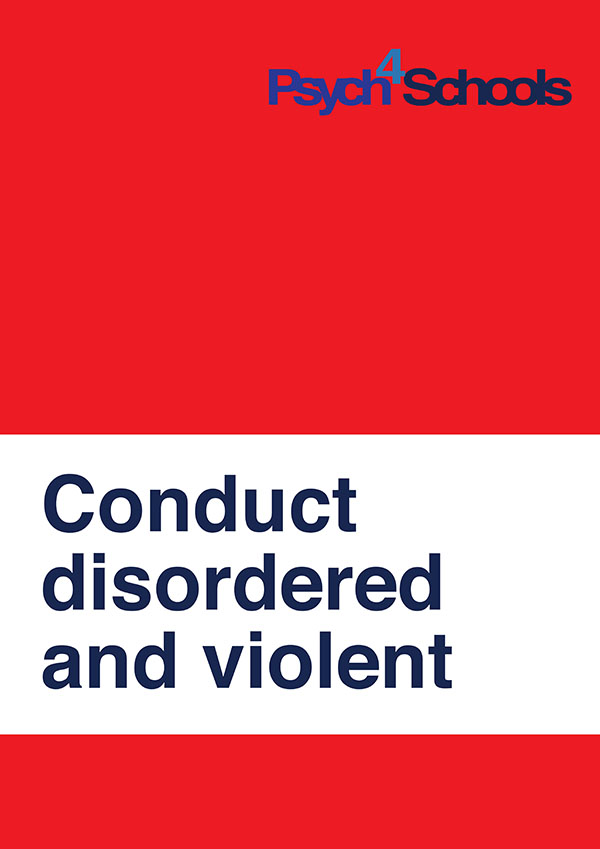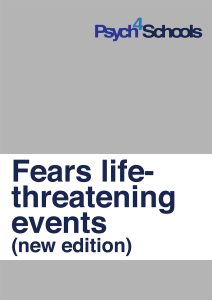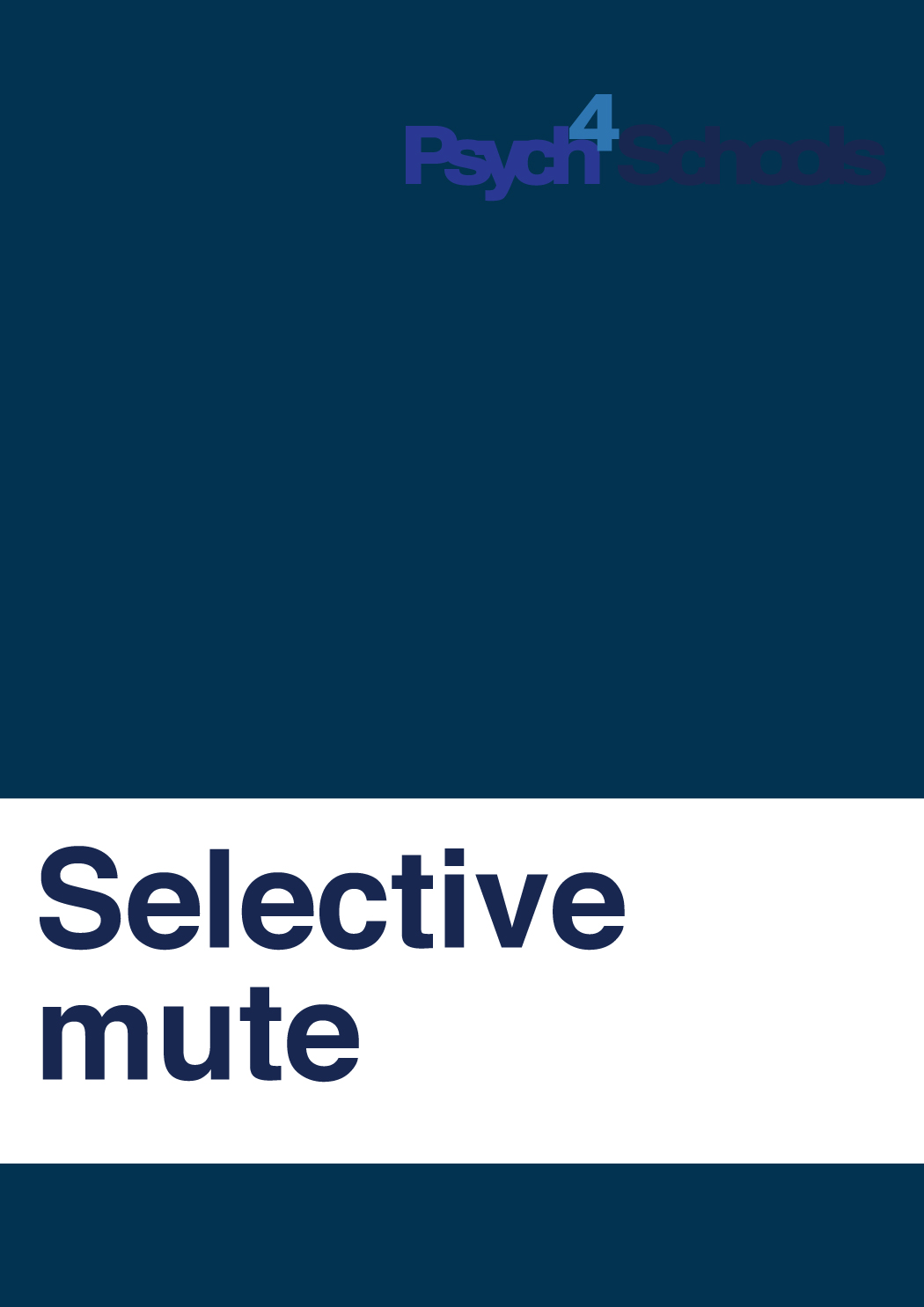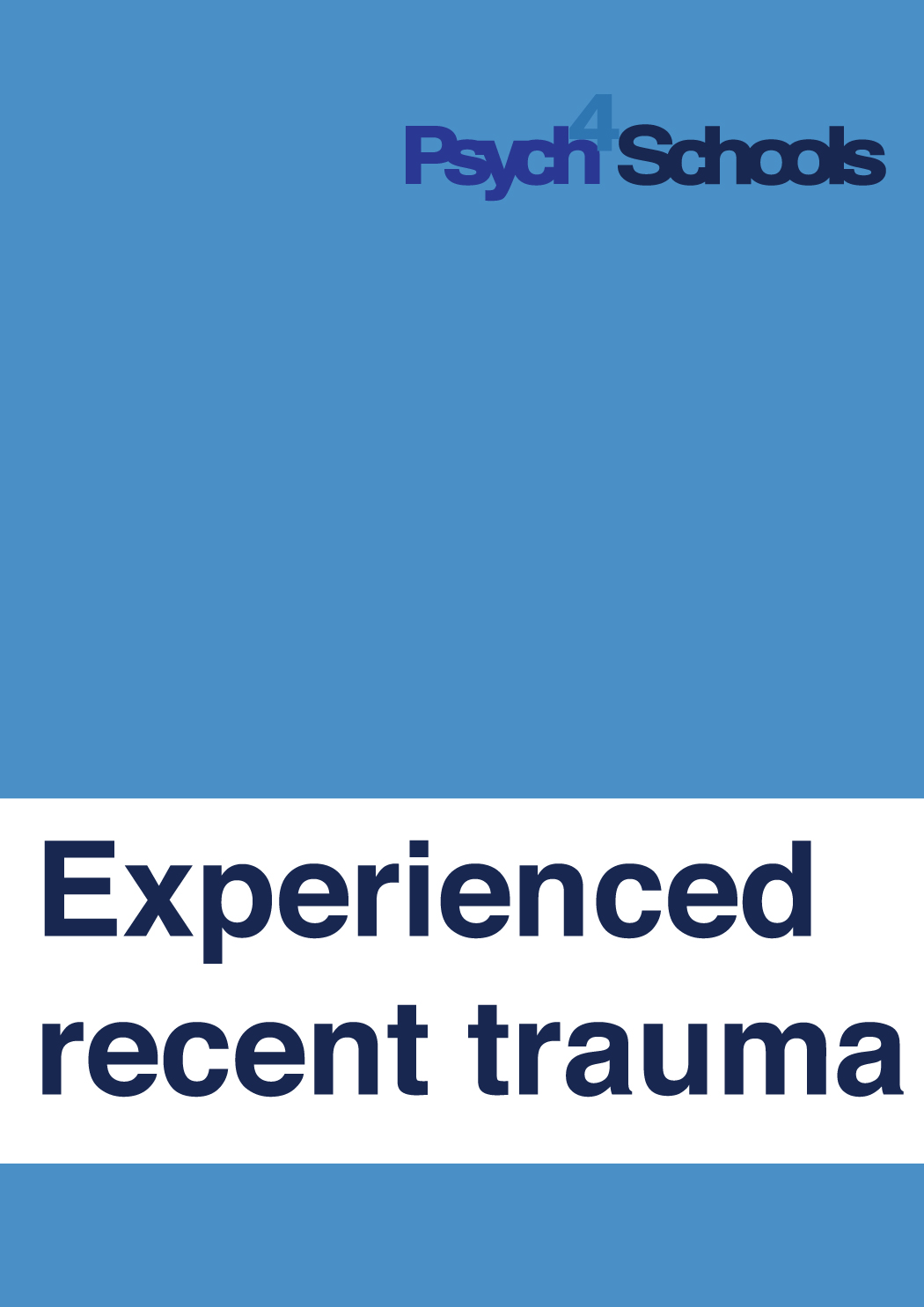Conduct disordered and violent
The following is an excerpt from the ebooklet Working with children who are conduct disordered and violent by Murray Evely.
Introduction
The most challenging behaviours encountered in schools are exhibited by violent, out of control, conduct disordered children. Conduct Disorder (CD) affects a small percentage of children and is typically diagnosed between 10 and 16 years of age.[1] Victoria State Government, Better Health Channel (2020). Conduct disorder. Retrieved 27 May 2020. … Continue reading It is often preceded by the largely inherited condition Attention Deficit Hyperactivity Disorder (ADHD) followed by the co-existing condition of Oppositional Defiant Disorder (ODD). While most children with ADHD do not go on to develop CD, some with a difficult infant temperament and other characteristics such as a lower than average verbal IQ, attachment issues, dysfunctional family and/or peer groups, exposure to neglect, abuse or violence, may tend towards a pattern of aggressive, rule and law-breaking behaviours.[2] American Psychiatric Association. (2014). Diagnostic and statistical manual of mental disorders (5th ed.) Washington, DC: American Psychiatric … Continue reading
The Diagnostic and Statistical Manual of Mental Disorders – Fifth Edition (DSM-5) devotes a chapter to children with Disruptive Behaviour Disorders who lack impulse control and exhibit behaviours that can lead to CD. CD is a serious mental health condition that develops during childhood or adolescence and manifests into unique behaviours that infringe the rights of others, bringing these children into significant conflict with societal norms. Rules and laws are often seriously violated with little regard for authority figures.[3]Ibid.
CD children can pose a safety threat to themselves and others and require thoughtful, well-planned and flexible teaching. The school leadership team needs to support classroom teachers and other support staff with planning and resources to ensure the needs and wellbeing of CD children are balanced with those of others.
Psychological treatments such as behaviour therapy, psychotherapy, parent management training and functional family therapy are recommended[4]Victoria State Government, Better Health Channel, 2020 loc.cit. to support early and preventative application of teacher management strategies, and practical teaching and learning approaches suggested in this ebooklet.
CD children may experience a short attention span, learning and communication disabilities, anxiety and depression. These children are generally at high risk of:
- low educational attainment
- peer rejection
- school suspension or expulsion
- disengagement, truancy and dropping out of school
- health and medical issues including physical injury
- substance abuse and other reckless and risk-taking acts
- mental health problems such as self-harm and/or suicide
- a range of legal issues and/or criminal behavior
- development in early adulthood of psychiatric disorders for example, antisocial personality disorder.[5]American Psychiatric Association. (2014). Loc.cit.
School suspension and expulsion
A teacher education magazine[6]Little, G., Informal expulsions run rampant in Australian schools, evidence suggests, EducationHQ Australia, June 25, 2019 Retrieved 19 May … Continue reading reports that violent and aggressive students have resulted in rampant ‘informal expulsions’ (non-approved by the governing authority) in Australian schools. A national newspaper [7]Armstrong, C., Schools chalk up a compo increase, Daily Telegraph, July 3, 2019 page 3 reports a spike in school staff claiming workers compensation for emotional and psychological injury caused by violent students. The Victorian Ombudsman highlights the growing issue of formal and informal expulsions. The Ombudsman notes that principals and teachers work within a complex system, and their job is a difficult one. They are required to balance the high needs and difficult behaviour of some students with the educational needs of all students, as well as the safety and welfare of both students and teachers.[8]Victorian Ombudsman, Investigation into Victorian government school expulsions (2017) A letter to the Legislative Council and the Legislative … Continue reading
A recent system-wide comparison between Victoria, Australia and Washington State, USA [9]Hemphill SA, McMorris BJ, Toumbourou JW, Herrenkohl Tl, Catalano RF, Mathers M. Rates of student-reported antisocial behavior, school suspensions, … Continue readingfound that suspension and expulsion in Victoria is typically used as a last resort, with a focus on keeping students connected to schooling as long as possible. This ebooklet aims to support those working with students suspected of or who are diagnosed with CD in Australian schools.
Education departments around Australia regularly review suspension and expulsion policies, so keeping up to date with your state or territory guidelines and policies is advised.
Managing conduct disordered behaviour
CD behaviour frequently creates crisis situations in schools. The following examples illustrate the seriousness of the problem and the need for an immediate, considered response from the school.
1. With no warning, shards of window glass smash onto the principal’s desk. A Year 5/6 student outside the office building is taking out his frustration and anger using a wooden bat. Next, window glass smashes onto the acting deputy principal’s classroom desk. This student has directed his anger at the two most senior staff in the school. Both were working at their respective desks and were showered by broken glass.
2. After repeated requests to stop, the assistant principal eventually restrains a very aggressive student who was punching and kicking several students, before turning on him.
3. Teachers put knives and sharp instruments out of reach as an out-of-control student with a history of aggression and property damage bursts through the staffroom door yelling obscenities and using threatening language.
Incidents such as these generally result in lockdowns, 000 being called, and often four or more uniformed police attending. Many such incidents are investigated by the relevant department of education, and in most cases the actions of school employees involved in managing extreme behaviours are vindicated.
Violent outbursts and risk of harm
A range of factors can contribute to aggressive or violent outbursts from CD children. For example,
- high emotional distress
- multiple life stressors (such as family turmoil, feelings of abandonment, unresolved grief, personal issues, pending court appearances)
- perceived hostility from others
- a deep mistrust and/or lack of empathy for others
- non-compliance with medication or untreated mental health issues
- problems with self-regulation and/or faulty beliefs that feeling annoyed or very annoyed is the emotional equivalent of being extremely angry
- an early history associated with violence, threats or plans of violence, where violence is viewed as a source of fun, as a right or an entitlement
- last resort thinking where the child believes they have reached their limit to cope and acting violently or aggressively is the only way to solve the current stressful situation
- growing resentment and anger about their life and/or family circumstances
- problems explaining or advocating for themselves in words.
Such characteristics increase the likelihood of safety concerns including risk of harm to themselves and/or to others.
Child protection and school support
Child Protection agencies are often involved and generally should be involved with CD children [10]Mental Health Professionals’ Network Webinar, Coghill, D., (2019) Collaborating to recognise and address conduct disorder. December, 3 Retrieved 8 … Continue readingalong with regional, district or school support staff, mental health and community support agencies. The police and the criminal justice system may also become involved.
Origins of CD
Most children are born calm. For typically developing children two to four years of age is the most aggressive childhood period. Generally children learn to control aggression by the time they begin school, and most continue to reduce aggressive behaviours up to age 11.[11] Hall, S. S., The Accidental Epigeneticist, (2014) Nature, 505, 7481, 14 – 17 Later in mid to late adolescence there is a spike in aggressive and/or offending behaviour [12] Studies cited in Hemphill S.A., McMorris B.J., Toumbourou J.W., Herrenkohl T.l., Catalano R.F., Mathers M. (2007) loc.cit. for a small number of children which typically settles to a slightly higher rate of aggression than at age 11 years.
The early years through to late childhood are critical to pro-social emotional growth, with children requiring nurturing from parents/carers and empathetic childcare, pre-school and school educators. Initially self-regulation and tolerance are learnt through parents/carers and significant others who help them to soothe and calm in the face of the daily demands of home and school. Children need to feel understood, cared for and wanted by significant emotionally available adults who set clear expectations and boundaries, treat them with respect and protect and shield them from trauma and harm. Parents/carers and educators need to help socialise children to be kind and friendly, not to hurt others, support them to listen and use words to express their wishes and frustrations and help them to build tolerance and impulse control. Learning to take turns, problem solve and to respect others needs to be part of their everyday lives.
Unfortunately, some children do not receive this developmental foundation. Their temperament and early life and/or family experiences expose them to dysregulation, risks and trauma that affect their social emotional wellbeing and the development of the competencies required for self-efficacy and pro-social learning. From a very early age these at risk children can display irritable and hostile behaviour. They can be aggressive, non-compliant, and blaming of others. They may demonstrate poor impulse control, poor self-regulation, low frustration tolerance to everyday issues and a poor self-image.
While anti-social behaviour rates are higher in males experiencing socioeconomic disadvantage [13]ibid. this does not preclude other socio-demographic backgrounds affecting behaviour. In fact, there is combination of genetic, physiological, demographic, family and situational factors that can lead some children to display a pattern of antisocial behaviours across different settings.
The Victorian Government, Better Health Channel discusses the influence of family on disruptive behaviour disorders, considered to increase risk of children developing CD.
Other pathways to violence and aggression
Children who have been separated from parents, experienced poor attachment with parents or carers, or been exposed to violence or trauma including refugees with a history of torture, and other deeply distressing events can also demonstrate poor self-regulation, impulsivity and other disordered behaviour. In addition, a very small group of children diagnosed (and undiagnosed) with Autism Spectrum Disorder (ASD) with co-existing intellectual disability may also be violent. This latter group of ASD children is outside the scope of this ebooklet.
How is CD diagnosed?
CD is typically diagnosed between 10 and 16 years of age and up to 18 years. Boys are generally diagnosed at an earlier age than girls. [14]Victoria State Government, Better Health Channel (2020). Loc.cit.https://www.betterhealth.vic.gov.au/health/ConditionsAndTreatments/conduct-disorder Diagnosis by a paediatrician or psychiatrist is made using a range of checklists, observations, surveys and clinical interviews with parents, teachers and the child. Psychologists are also commonly involved in diagnosis and treatment.
Behaviours, or symptoms must have been present for a minimum of 12 months in at least three of 15 criteria, with at least one criterion present in the past six months. These criteria are grouped under four headings:
- Aggression towards people and animals
- Destruction of property
- Deceitfulness or theft
- Serious violations of rules.
Symptoms must also cause significant impairment within social settings, school or workplace.[15]American Psychiatric Association. (2014). loc.cit.
Characteristics of CD
The DSM-5 distinguishes CD by the age of onset, with or without limited pro-social emotions, and severity:
-
- mild (minor harm to others)
- moderate (intermediate harm to others) and
- severe (causes considerable harm to others).
Childhood onset is specified as having at least one symptom prior to age 10, adolescent onset with no symptom characteristics prior to age 10, and unspecified where there is insufficient information to determine age of onset. Children with the childhood onset type are more likely to have persistent CD into adulthood [16]Ibid. . A minority of CD children can also be diagnosed ‘with limited prosocial emotions. They are characterised by:
- lack of remorse
- are often callous and lack empathy
- are unconcerned about their performance at school, or work, and
- have shallow emotions.
Sometimes emotional expressions are used for gain, to manipulate or intimidate others. [17]Ibid.
Gender differences in CD
Males are overrepresented in this disorder and biological variables are major influences on this difference [18]Eme, R., (2010) Sex differences in conduct disorder, Journal of clinical child psychology, 24, 4, 406-426. Retrieved 18 May 2020 … Continue reading. Boys also tend to externalise their dangerous behaviours through fighting, stealing, being cruel to people and animals, causing property damage and seriously violating rules and laws. Whilst, girls tend to exhibit lying, truancy, running away overnight, substance abuse and sexual promiscuity [19]American Psychiatric Association. (2014). loc.cit. . Both males and females engage in relational aggression (discussed further on page 9), with girls generally exhibiting more of this social harm. [20]American Psychiatric Association. (2014). Ibid.
Aggression and sleep problems
Sleep problems can affect children with ADHD, ODD and CD [21]Aronen, E.T., Lampenius, T., Fontell, T and Simola, P. (2014) Sleep in Children with Disruptive Behavioural Disorders, Behav Sleep Med, Sept 12, 373 … Continue reading and can exacerbate the daily functioning difficulties of children with hyperactivity. There is evidence that when children’s sleep habits and patterns are managed (for example, by effective bedtime routines or use of relaxation techniques) along with standard clinical care, daily functioning improves [22]Congress paper, Mulraney, M., The Sleeping Sound with ADHD Study, APS National Congress, 2016. Murdoch Children’s Research Institute. Assessment for sleep disorders may provide a treatment opportunity for some aggressive children [23]Chervin RD1, Dillon JE, Archbold KH, Ruzicka DL. Conduct problems and symptoms of sleep disorders in children. J Am Acad Child Adolesc Psychiatry. … Continue reading to improve their sleep and ease their symptoms.[24]Aronen, E.T., Lampenius, T., Fontell, T and Simola, P. (2014) loc.cit.
Friends, peer relationships and aggression
Children with behavioural disorders are three times more likely to be rejected by peers [25] Searcy, S. and Meadows, N.B., (1994), The impact of social structures on friendship development for children with behavior disorders, Education and … Continue readingand are generally avoided by most other children. This includes those who easily or frequently get upset and angry, arrive at school angry, or who don’t respect the personal space of others [26]Action research observed by Murray Evely with assistant principals and teachers and 50 students in Years 3 to Year 9 across schools of varying … Continue reading. As early as preschool children show negative attitudes to peers who display annoying, unpleasant, aggressive or disruptive behaviour, such as not playing by the rules.
Aggressive or CD children may have friends, but they tend to choose peers who reinforce each other’s aggressive behaviours, and this can further increase aggression [27] Sijtsema, J. J., Ojanen, T., Veenstra, R., Lindenberg, S., Hawley, P. H., & Little, T. D. (2010). Forms and functions of aggression in … Continue reading. Friendship and fun for these children often involves coercion and conflict [28]Ibid.. For example, aggressive friends can gang up on each other, or others outside their friendship group. They often view bullying and teasing as ‘fun’ despite experiencing elevated levels of anxiety when they are targeted. This issue can be exacerbated for those who live in housing estates and attend the same school since they generally do not get a break from each other. Hence, some feel forced into a delinquent peer group for self-protection, despite members turning on one another from time to time.
Social relationships may be harmed through relational aggression, when children say mean things, post harmful comments on social media, engage in malicious lying, and exclude, ridicule or taunt others. Such bullying, including cyberbullying, is hurtful and destructive to the targeted individual and to their social relationships. It can be difficult to identify and intervene to counter relational aggression, particularly when it is hidden. Inviting or challenging the unwilling CD child to own up to their whispered threats, intimidating looks and other non-verbal harassments without witnesses, often leads to a stalemate. Some teachers can be wary of interventions such as restorative practices which may lead to unsafe, unpredictable outcomes.
ADHD, ODD and CD
ADHD is a neurodevelopmental disorder which can have lifelong implications. It is the most commonly diagnosed mental health disorder in Australian school-age children. The Australian population survey on the mental health and wellbeing of children and adolescents reported the incidence as follows: [29] Australian Institute of Health and Welfare 2020. Australia’s children. Cat. no. CWS 69. Canberra: AIHW.
| Age | Boys | Girls |
| 4 – 11 | 11% | 5% |
| 12 -17 | 10% | 3% |
Around forty per cent of children with ADHD also develop Oppositional Defiant Disorder (ODD) [30] Evely, M. and Ganim, Z., (2018) Working with Children with Attention Deficit Hyperactivity Disorder (revised). Melbourne, Australia: Psych4Schools … Continue reading. This disorder is characterised by negativity, hostility, and defiance. ODD can be viewed as a milder and earlier precursor of CD, though not all of these children will develop CD.
There is no current cure for these three disorders, and they can all co-exist with other difficulties. About two percent of children diagnosed with ADHD and ODD go on to be diagnosed with CD [31] Mental Health Professionals’ Network Webinar, (2019) loc.cit. though the DSM-5 estimates the prevalence from two percent up to more than ten percent [32]Raising children.net.au The Australian Parenting website, Oppositional defiant disorder (ODD): children 5 -12 years. … Continue reading . Increased anxiety is found to be associated with increased levels of ODD and CD for children with ADHD [33] Humphreys, K.l., Aguirre, V.P., and Lee, S., S, (2012) Association of Anxiety and ODD/CD in Children With and Without ADHD, J Clin Child Adolesc … Continue reading. Anxiety contributes to poor functioning for children with ADHD, affecting their ability in sustaining attention, daily functioning, behaviour management, school attendance and family functioning. [34]Sciberras, E., (2014) Managing Anxiety in Children with ADHD using Cognitive Behaviour Therapy. Lancet Psychiatry
ADHD behaviours are commonly managed through tailored behaviour management programs for parents, teachers and the child. For many children this will be in combination with stimulant medication [35]Evely, M. and Ganim, Z., (2018).loc.cit.. Effective teaching and a pro-social school environment, psychological intervention, family therapy, and support to strengthen parenting and the parent/child relationship can help to reduce oppositional behaviour.
It is important to minimise the impact of any learning and communication disabilities, anxiety or depression on CD children to give them the best opportunity to access academic success.
CD children with ADHD need their inattentive, impulsive and hyperactive behaviours monitored and supported. For further information associated with possible negative long-term outcomes and the need to assist children with ADHD to form a positive self-concept and a belief that they have abilities that are valued, see the Psych4Schools ebooklet, Working with children diagnosed with Attention Deficit Hyperactivity Disorder (revised).
Supporting all children to adopt a growth mindset can also be beneficial. For information see Carol Dweck’s work on Growth Mindsets.
Vulnerable transition times
The transition from pre-school to primary school, from Year 2 to Year 3 and from primary to secondary school are high-risk times for students with ADHD and emerging or co-existing conditions. Children can become anxious and/or aggressive and disengaged from school during these periods. In pre-school the main manifestation of ADHD is hyperactivity. In primary school inattention becomes more obvious. In the early years of secondary school inattention, restlessness, fidgeting, impulsivity and poor planning persist and are common.
From primary to early secondary school years, the onset of ODD can initially cause hostility, non-compliance, temper outbursts and anger. During transitions, increased impulsivity, inattention, hyperactivity and conduct problems result in an increased likelihood of suspension. As behaviour deteriorates, learning can plateau or decline.
Teachers need to closely monitor transition plans for all students moving to secondary school. With the emergence or onset of CD during this phase, more dangerous and unsafe behaviours, along with serious violations of rules, regulations and laws may emerge.
Long-term implications
Children with ADHD, ODD and CD do not have a choice in the onset or development of these disorders. Up to 80 percent of children with ADHD will continue to display symptoms of this disorder throughout adolescence and into adulthood. However, with appropriate support and intervention during childhood, many people with a diagnosis of ADHD will learn to manage their symptoms into adulthood living fulfilling lives and develop successful careers. However, some children with ADHD, particularly those with co-existing learning or mental health conditions, may find it difficult to maintain employment without a high level of support from family members or community agencies.
As previously mentioned, there is no current cure for ADHD, ODD and CD. Perhaps the greatest obstacle to successful pharmacological and psychosocial interventions for ADHD, ODD, and CD is careful diagnosis and treatment planning. Despite representing three of the most common presenting paediatric psychiatric disorders, they often remain undiagnosed, untreated or misdiagnosed. [36] Althoff, R.,R, MD, Rettew, D. C., MD and Hudziak, J, J, (2003) Attention-deficit/hyperactivity disorder, oppositional defiant disorder, and … Continue reading
The Royal Children’s Hospital outlines an extensive psychosocial intervention program for Disruptive Behavioural Disorders.
Approximately forty per cent of children with CD will experience a lifelong persistent pattern of antisocial behaviour from early adulthood. In others, these behaviours either cease or persist without noticeable symptoms [37]Gelhorn HL1, Sakai JT, Price RK, Crowley TJ. DSM-IV conduct disorder criteria as predictors of antisocial personality disorder. Compr Psychiatry. … Continue reading. While CD is a difficult disorder for many children to live with, it is important that we do not underestimate the effective role teachers and schools can play in supporting children to minimise the impact of conduct disorder on their lives.
Strategies to support the child who is conduct disordered and violent
Learning and wellbeing plans
- Follow recommendations made by the child’s specialist, GP, psychologist or accredited mental health professional.
- Apply for funding to support the child’s individual social and emotional, behavioural and educational needs. Financial support is available to most Australian schools and may enable the CD child to access targeted support such as regular psychiatric or psychological support, specialised resources and/or the provision of teacher aides or educational support officers in the classroom. Check with your relevant education department or governing authority on the criteria required to gain funding for the child demonstrating severe behaviour, social emotional issues or a disruptive behavioural disorder.
- When the child is calm and amenable assess their maths, English and conversational skills. For most of these children, learning disabilities will impact on their whole academic and social experience as they struggle to verbally express themselves, process instructions, acquire basic skills, keep up in class, construct their own learning and get along with others. A comprehensive educational assessment can inform the use of appropriate strategies to support learning. For assistance see the Psych4Schools ebooklet, Working with children with learning disabilities.
- Build on the child’s strengths and interests to help the child find meaningful direction in their everyday life.
ISBN 978-1-921908-48-4 Copyright © Murray Evely 2020
No part of this excerpt may be reproduced or reprinted without permission in writing from the publisher. Click here to read copyright details, a summary of the licence and terms and conditions to use and reproduce our digital materials granted to authorised users.
References
This article is an excerpt from the ebooklet Conduct disordered and violent.
Download the complete ebooklet for full access to strategies and resources, including:
- Learning and wellbeing plans
- Safety, risk of harm and care plans
- Behaviour support plans and wellbeing strategies
- Looking after yourself
- Working with parents/carers and other professionals
- Effective teaching practice
- Building hope, understanding and belonging
- Using aides and support teachers effectively
- Reducing anger and building self-regulation
- Getting along with others





